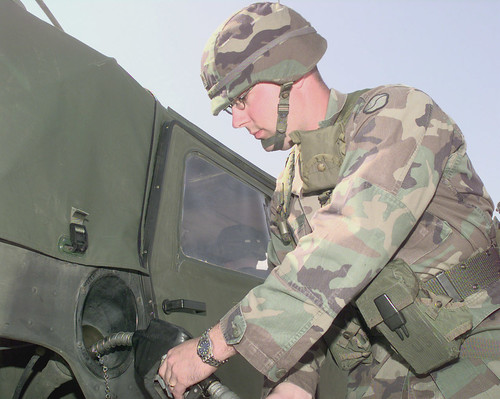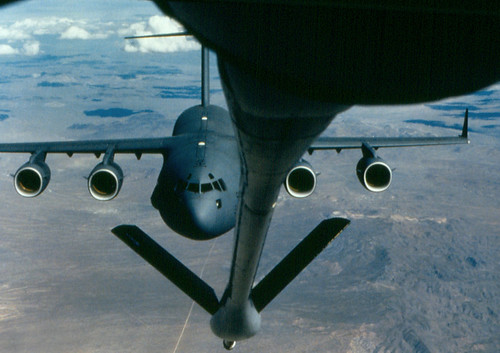For the Defense Department, the largest consumer of energy in the United States, addiction to fuel has greater costs than the roughly $18 billion the agency spent on it last year.
By some estimates, about half of the U.S. military casualties in Iraq and Afghanistan are related to attacks with improvised explosive devices on convoys, many of which are carrying fuel. As of March 20, 3,426 service members had been killed by hostile fire in Iraq, 1,823 of them victims of IEDs.
“Every time you bring a gallon of fuel forward, you have to send a convoy,” said Alan R. Shaffer, director of defense research and engineering at the Pentagon. “That puts people’s lives at risk.”
Spurred by this grim reality, the Pentagon, which traditionally has not made saving energy much of a priority, has launched initiatives to find alternative fuel sources. The goals include saving money, preserving dwindling natural resources and lessening U.S. dependence on foreign sources.
“The honest-to-God truth, the most compelling reason to do it is it saves lives,” said Brig. Gen. Steven Anderson, director of operations and logistics for the Army. “It takes drivers off the road.”
Other than fueling jet engines, the largest drain on U.S. military fuel supplies comes from running generators at forward operating bases. The Pentagon says that the wars in Afghanistan and Iraq have required more fuel on a daily basis than any other war in history. Since the conflicts in Afghanistan and Iraq began in 2001 and 2003, respectively, the amount of oil consumption at forward bases has increased from 50 million gallons to 500 million gallons a year.
To help reduce consumption, the Pentagon is using $300 million of the $7.4 billion it received from the economic stimulus package to accelerate existing programs for developing alternative fuels and saving energy.
The Pentagon is also investing $15 million of the stimulus money into developing lightweight, flexible photovoltaic mats that could be rolled up like a rug and used at forward bases to draw solar power for operating equipment. “We think $15 million will let us build, develop and test one of these roll-out mats,” Shaffer said.
The Pentagon is also testing the use of solar and geothermal energy to provide power at installations. The Army, for example, is partnering with a private firm to build an enormous, 500-megawatt solar farm at Fort Irwin, Calif. The farm would supply the 30 to 35 megawatts needed to operate the installation, with the remaining available for sale to the California electrical grid.
About $6 million is aimed at improving a program run by the Defense Advanced Research Projects Agency to convert algae into jet propulsion fuel 8, or JP-8, that could power Navy and Air Force aircraft.
Other initiatives include $27 million to develop a hybrid engine the Army could use in tactical vehicles and $2 million to develop highly efficient portable fuel cells that could reduce the battery load carried by infantry soldiers.
Click here to read the entire article (Free Registration required).



